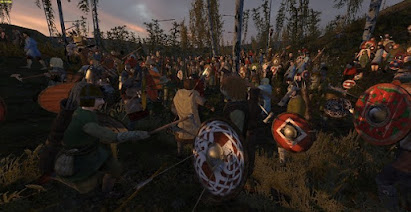This time, I have a unit of Roman Equites as they would have looked during the so called "Camillian Reforms" following the sack of Rome in 390BC until the outbreak of the Second Punic War in 218BC.
They will be classified under the Lion Rampant rules as light cavalry, as my own research points to the Roman cavalry of this time having little to no armor in contrast to the Equites of the Second Punic War onward. Given the amount of tunic showing, I made sure each cavalryman has a noticeable angusticlavia, the two vertical tyrian purple stripes on the tunic denoting their equestrian rank. I also made sure that the leader of the unit in silvered armor is wearing red senatorial boots, as I intend this unit to double as the Counsul's voluntarii. I primarily used Armies of the Macedonian and Punic Wars by Duncan Head plus their depiction in the Medieval II: Total War mod Europa Barbarorum II (seen below).




















